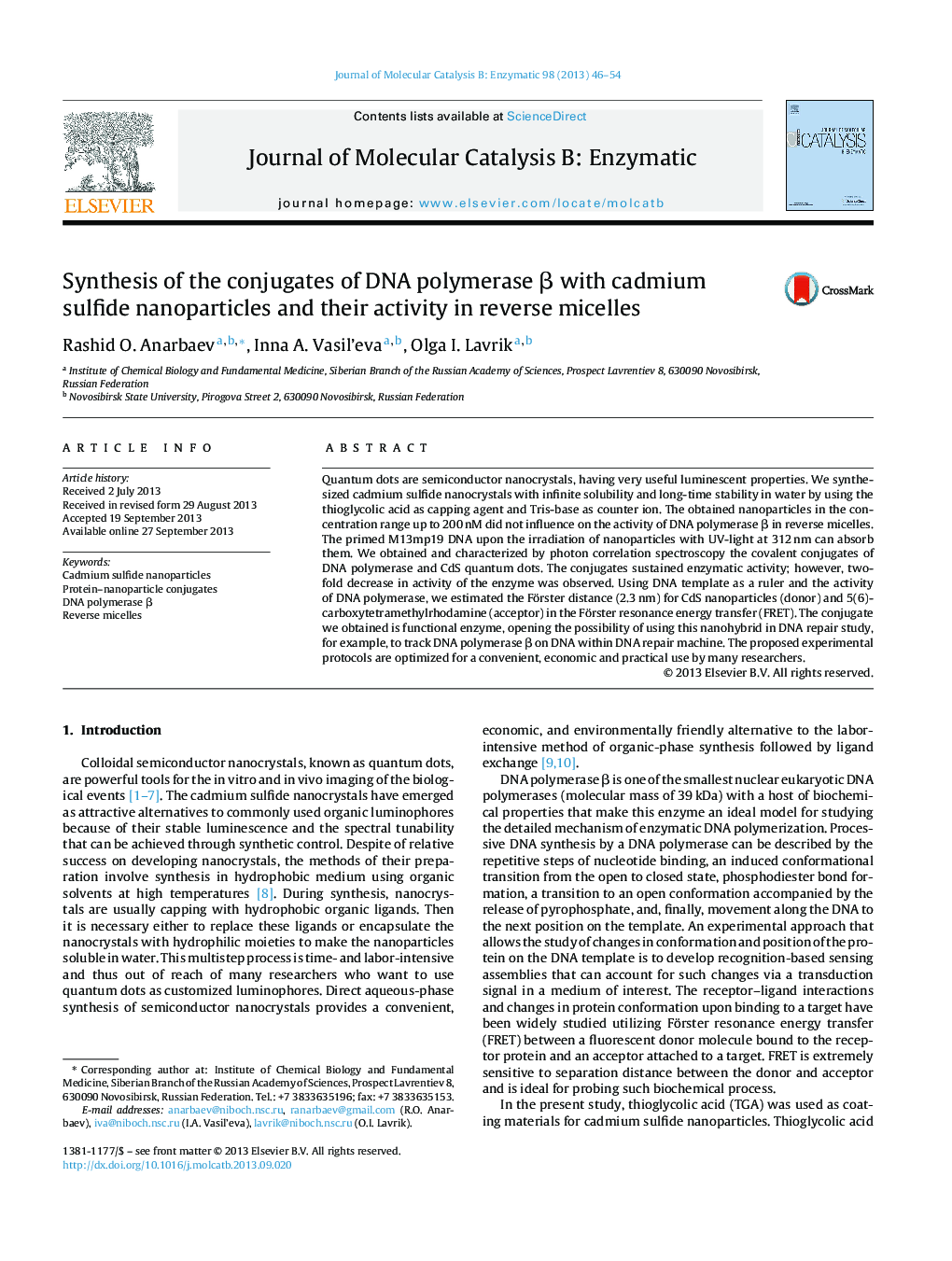| Article ID | Journal | Published Year | Pages | File Type |
|---|---|---|---|---|
| 69809 | Journal of Molecular Catalysis B: Enzymatic | 2013 | 9 Pages |
•We synthesized cadmium sulfide nanoparticles with infinite solubility in water.•We obtained the smallest DNA polymerase β-CdS nanoparticle conjugates.•We explored the polymerase activity of the conjugates in reverse micelles.•We estimated the Förster distance for CdS conjugate (donor) and TAMRA (acceptor).
Quantum dots are semiconductor nanocrystals, having very useful luminescent properties. We synthesized cadmium sulfide nanocrystals with infinite solubility and long-time stability in water by using the thioglycolic acid as capping agent and Tris-base as counter ion. The obtained nanoparticles in the concentration range up to 200 nM did not influence on the activity of DNA polymerase β in reverse micelles. The primed M13mp19 DNA upon the irradiation of nanoparticles with UV-light at 312 nm can absorb them. We obtained and characterized by photon correlation spectroscopy the covalent conjugates of DNA polymerase and CdS quantum dots. The conjugates sustained enzymatic activity; however, two-fold decrease in activity of the enzyme was observed. Using DNA template as a ruler and the activity of DNA polymerase, we estimated the Förster distance (2.3 nm) for CdS nanoparticles (donor) and 5(6)-carboxytetramethylrhodamine (acceptor) in the Förster resonance energy transfer (FRET). The conjugate we obtained is functional enzyme, opening the possibility of using this nanohybrid in DNA repair study, for example, to track DNA polymerase β on DNA within DNA repair machine. The proposed experimental protocols are optimized for a convenient, economic and practical use by many researchers.
Graphical abstractFigure optionsDownload full-size imageDownload as PowerPoint slide
